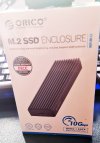PC Doctor
Active Member
- Reaction score
- 44
- Location
- Warrington, Cheshire
I am just wondering what usb boot disks people are using now for repairs and data recovery?
I have a windows 11 machine that will not boot just going through automatic system repair which it can't complete, every option to rebuild but keep files fails however all customer's data is on the machine which has an M2 SSD for which I don't have an adapter (That's another question).
I have gone into DOS and used robocopy to copy the user's folder to an external device and will then rebuild however a system with a GPU Booted from a pen drive would have been easier so could you point me to what you currently use?
Back to the M2 SSD what adapters are you now using and where from for these onboard drives?
I am UK Based.
I have a windows 11 machine that will not boot just going through automatic system repair which it can't complete, every option to rebuild but keep files fails however all customer's data is on the machine which has an M2 SSD for which I don't have an adapter (That's another question).
I have gone into DOS and used robocopy to copy the user's folder to an external device and will then rebuild however a system with a GPU Booted from a pen drive would have been easier so could you point me to what you currently use?
Back to the M2 SSD what adapters are you now using and where from for these onboard drives?
I am UK Based.



